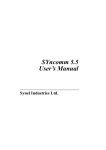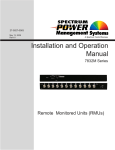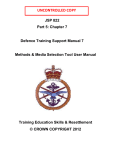Download In the Real World: Keeping Pace With The Techies
Transcript
NAESP : In the Real World: Keeping Pace With The Techies In the Real World: Keeping Pace With The Techies Educators should not hesitate to use Web 2.0 applications to improve the teaching and learning in schools. Leadership Compass » Vol. 5, No. 4, Summer 2008 by Christopher Peal Web what? Even as a self-proclaimed tech junkie, keeping up with current technological trends—let alone the next generation of them—can be daunting. At first, the topic of Web 2.0 sent me into a palm-sweating, brow-curling tailspin. I had never even heard of Web 1.0, let alone a second version of the thing. Not a problem. A quick Internet search can make anyone look like an expert, providing a mix of trustworthy information and misinformation with a few clicks of the mouse. Unfortunately, Web 2.0 does not Google well. Sadly, Wikipedia provides the best reference. Hats off to the guy who coined the phrase, but for the most part, the elusiveness of Web 2.0 remained high. Only after chatting with a number of colleagues—most of whom, by the way, had as little idea of what Web 2.0 was as I—did I finally get it. I was already using all kinds of Web-2.0type products at home and at work. This “next generation” of computer use was not that elusive at all; it was already here. Web 2.0 is a term for programs and applications that work via the Web. Until recently, highfunctioning computer use required a visit to a software store to purchase a $300 disk and an impossible-to-read downloadable user’s manual. Now, with only a click-click here, and a click-click there, anyone can be up and running with amazing programs by using a Webbrowser connection at any Wi-Fi location. From wikis to blogs, to eBay, to craigslist, anyone can perform relatively high-functioning computer operations. Connecting to other people, conducting business, and sharing information via video, audio, and pictures has become a universally easy process. Not long ago, discussions of collaboration and dialogue remained thoughtful intentions of organizational theorists studying high-performance companies. Teenagers, bypassing most theorists for the mere sake of purpose and application, have rapidly adopted Web 2.0 functions at speeds only they are capable of keeping. From MySpace to Facebook, they capably share intimate and not-so-intimate details of life across community and global lines. So what does Web 2.0 mean for the educational community? z Communication. Getting information in the hands of colleagues, families, and the public has never been easier. Parents can track their child’s attendance, grades, and classroom assignments online with ease. Schools can call or e-mail entire communities within seconds of an event’s occurrence. Teachers and administrators can share and coordinate academic events by making them readily available via interactive Web sites, blogs, and other messaging systems. z Service Availability. Students and parents increasingly have options about the educational process. If you do not provide the appropriate services, your constituency can and will go somewhere else. One growing and viable school alternative is Webbased education, which allows students to learn any time of the day from any location in the world. They can already access vodcasts, podcasts, video streams, and up-to-thesecond news and information. Once these pieces are tied to an educational learning environment, physically showing up in a classroom every day could become passé. z Access. Flexibility and ease of use have become integral to operating in our culture. We should not hesitate to use Web 2.0 applications to make the lives of teachers, Page 1 of 2 NAESP : In the Real World: Keeping Pace With The Techies students, and parents easier. If school districts can universally make forms, files, reports, and curriculum pieces available to staff, a service has been provided. If parents can communicate with schools 24 hours a day through e-mail, messaging, or interactive Web programs, value is added. If students can enhance in-class learning through the supportive availability of information and materials or through communicating with a broader community of peers, we have helped to create a stronger and more engaged population of learners. If educators can be the front-runners in harnessing the potential inherent in the structure of these technological initiatives, we can more strongly meet 21st century students’ needs while providing the personal and compassionate connections with students that we have provided in the past. From the field, Christopher Peal Christopher Peal is principal of Meadowbrook Elementary School in Novi, Michigan. His e-mail address is [email protected]. Page 2 of 2













